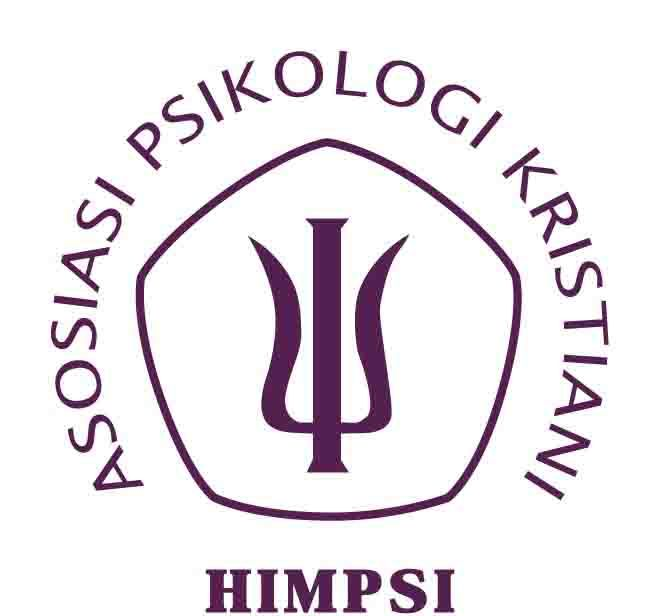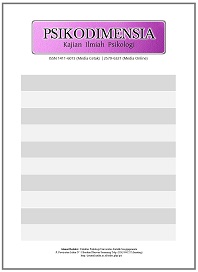Correlation Between Emotion Regulation And Self-Harm Tendencies in College Students
Abstract
The individual's inability to solve problems causes distress, leading to negative emotions or affect. Some of the negative feelings that college students experience are, for example, working excessively, smoking, drinking alcoholic beverages, consuming drugs, or self-harming. College students should be able to make problem-solving plans correctly based on problem-solving steps and evaluate themselves to relevant arguments in solving problems. At least college students do not do self-harm behavior as a coping in their lives because students are judged to be able to think well in dealing with the problems they face. The purpose of this study was to determine the relationship between emotion regulation and self-harm tendencies in college students. This research method uses a quantitative approach to the type of correlational research. Sampling in this study used an incidental sampling technique. The subjects of this study were college students who were active in learning at the University of Muhammadiyah Banjarmasin, with as many as 312 subjects. The scale used in this study is the emotion regulation scale and the self-harm tendencies scale, with the scaling model being the Rating scale. The results of this study show that there is a negative and significant relationship between emotion regulation and self-harm tendencies in college students, with a coefficient (r) of -232 and a value (Sign.) of 0.000. This means if the emotional regulation is higher, the self-harm tendencies are lower. Meanwhile, emotional regulation is insufficient, and self-harm tendencies are higher.
Keywords
Full Text:
PDFReferences
Alderman, T. (1997). The scarred soul: Understanding & ending self-inflicted violence. Oakland, CA : New Harbinger.
Cole, P.M., Martin, S.E., & Dennis, T.A. (2004). Emotion regulation as a scientific construct methodological challenges and directions for child development research. Child development, 75(2), 317-333.
Estefan, G., & Wijaya, Y. D. (2019). Gambaran Proses Regulasi Emosi Pada Pelaku Self Injury. Jurnal Psikologi, 12(1), 26–33.
Gratz, K. L. (2007). Targeting emotion dysregulation in the treatment of self-injury. Journal of Clinical Psychology: In Session, 63(11), 1091-1103.
Gross, J. J., & John, O. P. (2003). Individual Differences in Two Emotion Regulation Processes: Implications for Affect, Relationships, and Well-Being. Journal of Personality and Social
Psychology, 85(2), 348–362.
Gross, J. J., & Thompson, R. A. (2007). Emotion regulation: Conceptual foundations. In J. J. Gross (Ed.), Handbook of emotion regulation. New York: Guilford Press.
Harefa, I. E., & Mawarni, S. G. (2019). Komunikasi Interpersonal (Self Talk) Sebagai Pencegahan Self- Harm Pada Remaja. Prosiding Seminar Nasional 2019: Pengembangan Karakter Dalam
Menghadapi Era Revolusi Industri 4.0, 1(1), 173–178.
Hasking, P., & Boyes, M. (2017). The Non-Suicidal Self-Injury Expectancy Questionnaire : Factor structure and initial validation. Clinical Psychologist, 22(2), 251-261.
Hurlock, E. B. (1996). Psikologi Perkembangan. Jakarta: Erlangga.
Hulock. Elizabeth. (1980). Psikologi Perkembangan edisi kelima terjemahan. Jakarta: Penerbit erlangga
Klonsky, E. D. (2007). Non-suicidal self-injury: An introduction. Journal of Clinical Psychology: In Session, 63(11), 1039-1043.
Maidah, D. (2013). Self Injury Pada Mahasiswa (Studi Kasus Pada Mahasiswa Pelaku Self Injury). Development and Clinical Psychology, 2(1), 6–13.
National Institute for Health and Care Excellence. (2016). “Self-harm - NICE Pathways.” http://pathways.nice.org.uk/pathways/self-harm diakses pada 19 februari 2022 pukul 15.04.
NHS Choices. (2011). Self-harm. http://www.nhs.uk/conditions/Self-injury/Pages/Introduction.aspx diakses pada 10 februari 2022 pukul 15.10.
Nock, Matthew K & Mendes. (2008) Physiological Arousal, Distress Tolerance, and Social Problem–Solving Deficits Among Adolescent Self-Injurers. Journal of Consulting and Clinical
Psychology. 76(1), 28-38.
Nur, F., Putri, S., & Afiati, N. S. (2021). Self-Injury Di Era Digital: Pengembangan Skala Self-Injury In The Digital Era: Scale Development. Prosiding Seminar Nasional 2021 Fakultas
Psikologi Umby, 70–79.
Pattison, E. M., & Kahan, J. (1983). The deliberate self-harm syndrome. The American Journal of Psychiatry, 140(7), 867–872.
Pereira, Stephen., Reay, Katie., Bottell, Jo., Walker, Lucy., & Dzikiti, Chris. (2019). University Student Mental Health Survey 2018. The Insight Network and Dig-In
Rizqi, M.Ilmi. (2011). Pengaruh Kematangan Emosi Terhadap Kecenderungan Perilaku Self Injury Pada Remaja. Skripsi. Jakarta: Fakultas Psikologi Universitas Islam Negeri Syarif
Hidayatullah.
Romas, M. Z. (2012). Self-Injury Remaja Ditinjuau Dari Konsep Dirinya. Jurnal Psikologi, 8(1), 40–51.
Santrock, J. W. 2012. Life-Span Development Perkembangan Masa Hidup Edisi ketigabelas Jilid 1. Jakarta : Erlangga.
Sivertsen, B., Hysing, M., Knapstad, M., Harvey, A. G., Reneflot, A., Lønning, K. J., & O’Connor, R. C. (2019). Suicide attempts and non-suicidal self-harm among university students:
prevalence study. BJPsych Open, 5(2), 1–8.
Sugiyono. (2019). Metode Penelitian Pendidikan (Kuantitatif, Kualitatif, Kombinasi, R&D dan Penelitian Pendidikan) (A. Nuryanto (ed.); cetakan ke). Bandung: Alfabeta.
DOI: https://doi.org/10.24167/psidim.v22i2.4933
Print ISSN : 1411-6073 | online ISSN : 2579-6321 View My Stats

This work is licensed under a Creative Commons Attribution 4.0 International License.




















